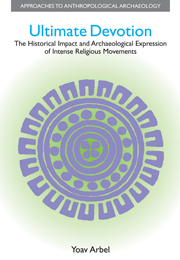 Ultimate Devotion
Ultimate Devotion 2 - God and Country
from Part I
Summary
For nearly a century, the Tambaran cult had been the artery of life for Ilahita, a large village in northern Papua New Guinea. In 1984, everything suddenly changed. In the course of a dramatic iconoclastic spell, Ilahita's men violated a fundamental taboo of Tambaran by disclosing its secrets to the women and shattering its revered ritual paraphernalia. A belief system that had provided spiritual guidance and social solidarity for several generations had thus been contemptuously purged. Donald Tuzin (1997: 33), who spent several years studying Ilahita, observes that with the fall of Tambaran
the traditional grounds of male solidarity and association were obliterated…without all of the ancillary topics and projects [that Tambaran] gave men to talk about, without the stimulating need to coordinate competitions and displays, without even the companionable sharing of betel nut and tobacco, male society quickly declined. Without the cover of secrecy, without the protection of the Tambaran's canopy, masculinity as the Ilahita had known it for a hundred years could not continue…so when it died, masculine identity, purpose, and agency died with it.
It seems remarkable that members of a community would ruthlessly dispose of their own sacro-sanct spiritual symbols. Yet, the fate of Tambaran reflects the adaptability of religion to changing circumstances, a quality responsible to a large degree for its perseverance and vibrancy from pre-historic days to the present.
- Type
- Chapter
- Information
- Ultimate DevotionThe Historical Impact and Archaeological Expression of Intense Religious Movements, pp. 7 - 21Publisher: Acumen PublishingPrint publication year: 2009


